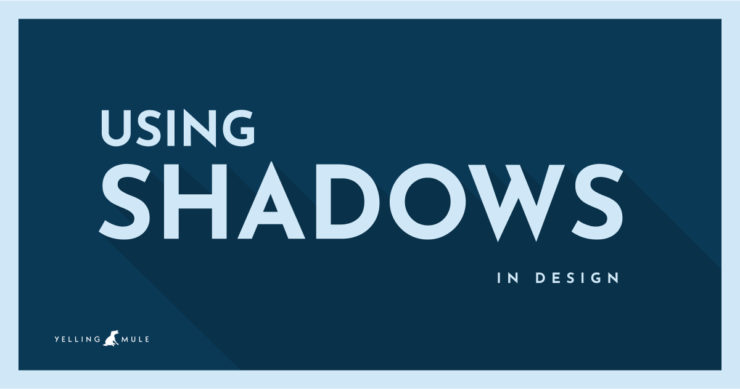
Light and shadows are everywhere we look. Visually, seeing light and shadow allows us to understand and process what we are seeing and how we are seeing it. Replicating light and shadow within design has the same effect, but digitally. Designers use shadows for multiple reasons. Together, light and shadows provide depth, aesthetic, functionality, and overall purpose. In design, they should stimulate and replicate real world light-casting.
Below are specific design features that are important to consider when applying light and shadow in your design composition.
Light Direction
The direction of light can be communicated to viewers through position of objects within a design composition, direction of shadow and cast shadow, and placement of highlight. Creating the illusion of a light source and its direction helps to create an overall atmosphere within a composition. The light source is the defining aspect of overall direction.
Highlight
Highlights help to balance shadows. The highlight should be the area facing the light source in the area that the light source is shining the brightest onto an object. Highlighting should not be overly noticeable, it should assist in creating dimension and shape within an object.
The Shadow
Similarly to highlights, shadows should not be overdone. Shadows should be applied strategically to create a sense of depth within a design composition. The shadow should be the darkest part of an object, furthest from the light source. Intensity of a shadow should depend on the light source itself – it is a harsh light source, soft? The harsher the light source, the more intense a shadow should be.
The Cast Shadow
The cast shadow is the shadow that is projected onto the surface that the object is placed on. The cast shadow typically goes in the same direction as the light source, but we see it on the opposite side of the object. Basically, cast shadows give the illusion that the object is blocking a light source.
We see cast shadows every day, as they occur from every source of light. Though shadows are often overlooked (as they are not typically the main focal point) it is important to utilize them properly because they communicate real life depth.
Designers use light and shadow effects strategically to keep designs from being 2D. Though flat designs are built regularly, applying real-life nature can help to communicate the vision going into a design. It can help the viewer understand the designers intention.

